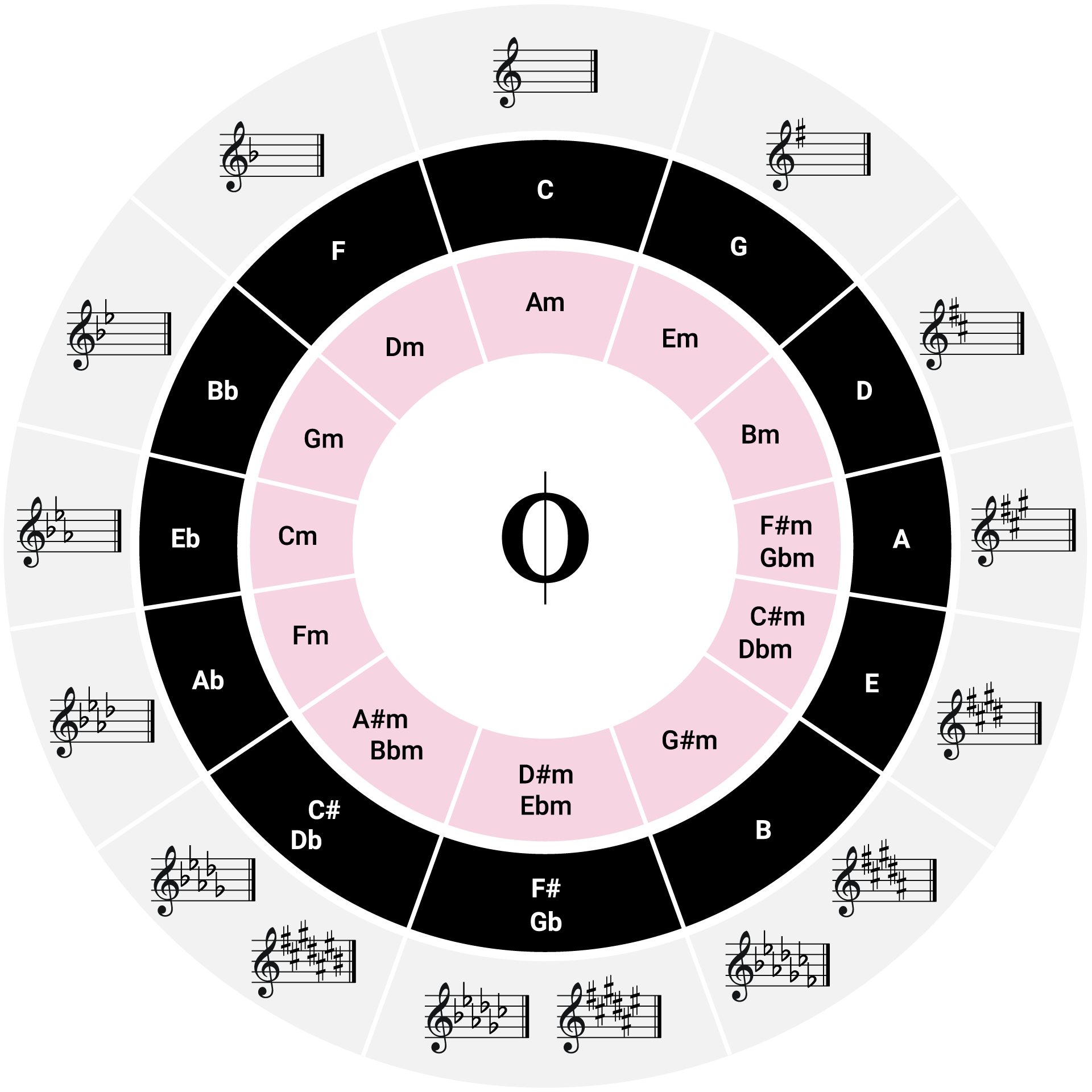Circle Of Fifths
Circle of Fifths: Major and Minor Key Signatures 2 0 1 7, M u si ca l U Images and this PDF document are provided under a Creative Commons BY-SA “Attribution-Sharealike” licence. This means you are free to adapt, reuse and distribute them under the. The circle of fifths is a tool used by musicians and songwriters to find the number of sharps or flats are in a key. This is vital to know and should be memorised for fast key recognition. As you’re moving clockwise around the circle, keys jump up by a fifth (hence the name).
This is the Key Signature for C Major as shown on the circle of fifths. There are no Sharps or Flats.
Here is a video of how to play a C Major scale on the piano.
The order of Sharps is always F, C, G, D, A, E, and B.

If there is one sharp in the key it would be F. If there were 3 Sharps the Key they would be F, C and G.
The order of Flats is always B, E, A, D, G, C and F.
If there is one Flat in the Key it would be B. If there were 5 Flats in the Key they would be B, E, A, D, and G.
To remember the order of sharps, there is an easy sentence to keep in mind: Fat Cats Go Dancing At Eds Broiler and to remember the order of flats, this sentence will help you: Boogie Ends And Down Go Cats Fast.
To start, use the circle of fifths to find the key you are looking for. Say for example you are looking at the key A Flat, it has four flats. So using the sentence: Boogie Ends And Down Go Cats Fast (B, E, A, D, G, C, F) you can tell the flat B, E, A, and D are the four flats used.
For more info on The Major Scale please click here also for all the Diatonic Scales please click here.
Score:
Ranking:

The circle of fifths is the key that unlocks the door to understanding music theory! Take some time each day to study the relationships illustrated the the circle and you'll be playing with the greats in no time.
What is it?
The circle of fifths is the concept that western music is based on; it illustrates the relationship between scales in a way that is, hopefully, easiest to understand. I compare the idea of the circle of fifths as looking at music theory from a distance; it gives you an overall view of what's going on.
Courtesy of Linkware Graphics

How to Read the Circle of Fifths
How the heck to you read this weird looking chart? Easy there turbo, it's not that hard. Some notes:
Circle Of Fifths Quiz
- When going clockwise, each key is a fifth above the last; hence 'circle of fifths'.
- When going counter-clockwise, each key is a fourth above the last. Many jazz chord progressions are based off of this pattern.
- In this version of the circle, as well as many others, the uppercase letters represent major keys and the lowercase letters represent their relative minor keys.
- Notice how, starting at C major, one sharp is added to each key as you go clockwise until around C# major; then it switches to flats that decrease by one on each key as you complete the circle. This is why we have sharps & flats. If the sharps continued past C# we would end up with 11 sharps! But when the flats take over they ease the load until the circle restarts.
- Keys that are directly across from one another are tri-tones of each other. ie: C -> F#
Making Chord Progressions From the Circle of Fifths
Remember this common chord progression?
I - IV - V - I
It's an example of subdominant (IV) and dominant (V) chords leading back to the tonic (I). If we have a tonic note we can use the circle of fifths to give us the subdominant and dominant chord of that key. Just locate the tonic in the circle, let's use C as an example, then locate the keys immediately adjacent on each side. So, if we're using C as the tonic the subdominant would be F, immediately counter-clockwise, and the dominant would be G, immediately clockwise.

Circle Of Fifths Printable Template
Patterns like that are what make the circle of fifths interesting. Not only does it make it easy to figure out chord progressions in any key it also creates a blank canvas for you to come up with your own chord progressions by experimenting with different patterns. Many musical styles are determined by the shape in which the chord progressions make on the circle of fifths. For instance, if you draw an equilateral triangle with each point pointing to a chord you'll get a progression where the chords are all a major third apart.